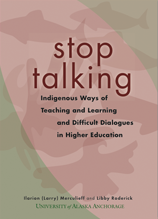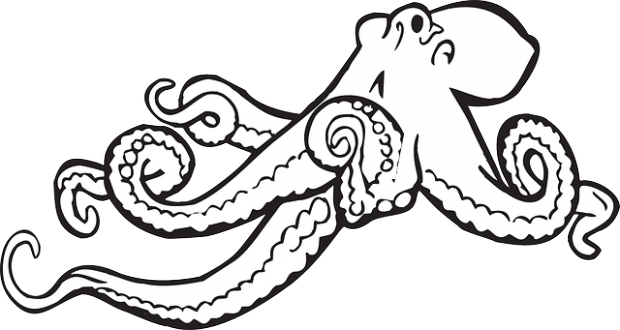Marissa Carl Acosta posted to Google+ about Stop Talking: Indigenous Ways of Teaching and Learning and Difficult Dialogues in Higher Education. I saw it and immediately wanted to read parts of it. Grabbing a random chapter, I dove in.
 This text, by evidence of chapter five: Into Our Classrooms, has lessons each instructor and student can benefit from. Chapter five has several sections. I read both An Octopus in Every Lesson and Saving the World with Indigenous Pedagogy.
This text, by evidence of chapter five: Into Our Classrooms, has lessons each instructor and student can benefit from. Chapter five has several sections. I read both An Octopus in Every Lesson and Saving the World with Indigenous Pedagogy.
After reading one chapter it is clear I need to read all of this book when I have more time. Regarding the remainder of chapter five: I skimmed it.
Amazing. To set the stage for my review you need to know there are two authors, an established instructor and a student embarking on a writing career with hopes to one day be a full professor.
Don Rearden, the professor, decides to take a different approach with his course, Enduring Books. Nothing strange there… but he decides to start off the semester with a blank syllabus; to create a contract and an understanding between the students and the instructor in a new way; to allow indigenous ways of teaching and learning to blossom.
Saving the World is quite moving. Not only does Rearden (2013) allow his students to have a completely new experience that should impact their lives not just their educational careers. But the tenants that he is instilling include a very real understanding of “we won’t be able to live sustainably until we think differently about our relationship with other creatures and the planet itself.” (p. 134)
The author discusses his method as “the same tired old Western model of education: read, lecture, discuss.” (p. 134) Instead he throws them into this experiment. He builds the group from day one.
I’d compare the possible impact of this to the Pay It Forward movement without the hype. At this point Reardon cannot know what might occur but he is taking advanced students who have figured out how to succeed with very little personal effort and putting them into a position to make things happen on a very personal level.
My notes became sparse as I got lost in the beauty of both the writing and the ideas being shared.
Since I was also reading Webber’s The Use of Learner-Centered Assessment in US Colleges and Universities at the same time as preparing to do this review, I drew comparisons between the two works. Namely I looked at Rearden’s approach with his class as exceptionally learner-centered.
Oliver notes that this course “was not going to be our standard lecture-listen-learn type of class.” (p. 136) These honor students were learning first hand that it wasn’t just an honor for them to be in the course, but they were to make a contribution, to honor others.
This article has very real recommendations for how an instructor can bring indigenous ways of teaching and knowing into the classroom. Furthermore, the methods shown are very respectful, the students from this class could easily take the experience and apply it in their work arena, their homes, any student-related event or meeting such as student government. I see the implications as far reaching.
Because my mind exploded with the possibilities and the writing of this article did not get in the way of that type of creativity, I count this as a product I can recommend to almost everyone I know. Should they read the whole book? I am unsure. Once I do, I’ll be able to answer that question.
I’m going to bring this back to my review, and sum up with the revelation provided by Reardon “The intensity of those discussions revealed the obvious personal interest they took in what we were doing and a deeper understanding of the text than I’d ever seen before. It demonstrated to me the validity of using Alaska Native ways of teaching and learning in the classroom.” (p. 137) Recall that Don is teaching students an honor’s English couse that is focused on the student learning Ishmael. Everything else is extra. In this case, the impact of the extra would be amazing to attempt to measure.
 I could add further to my review, but it would be best for you to just read the material. Take the time. These six pages might also catch your brain on fire. (Featured image pulled from the idea of ‘an octopus in every lesson.’)
I could add further to my review, but it would be best for you to just read the material. Take the time. These six pages might also catch your brain on fire. (Featured image pulled from the idea of ‘an octopus in every lesson.’)
Author’s note: Where I work several designers use a catch-word, meta. There is a bit of humor to it, but in this case we really have an instructor that is operating on many levels. It’s hard to unpack everything that’s going on, so I’ll just complete this article review and hope that each of you reading this are inspired to follow the link (above or below) and grab a copy of this work for yourselves.
References
Merculieff, L., & Roderick, L. (2013) Stop Talking: Indigenous Ways of Teaching and Learning and Difficult Dialogues in Higher Education, University of Alaska Anchorage, 180 pages
